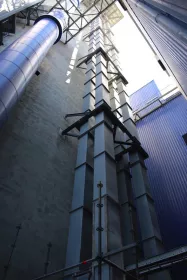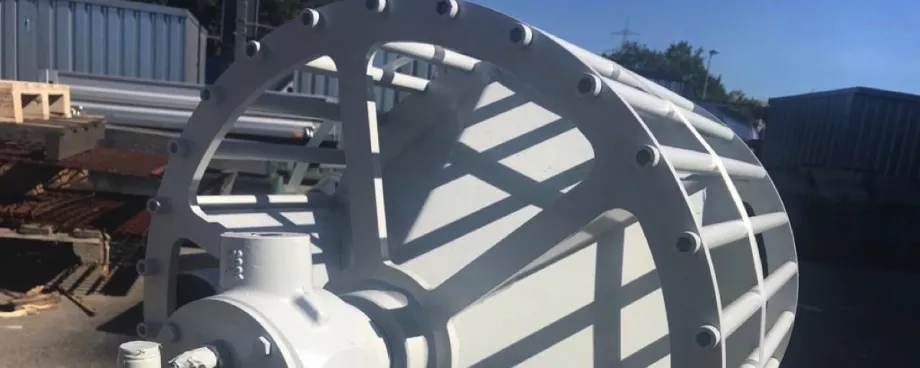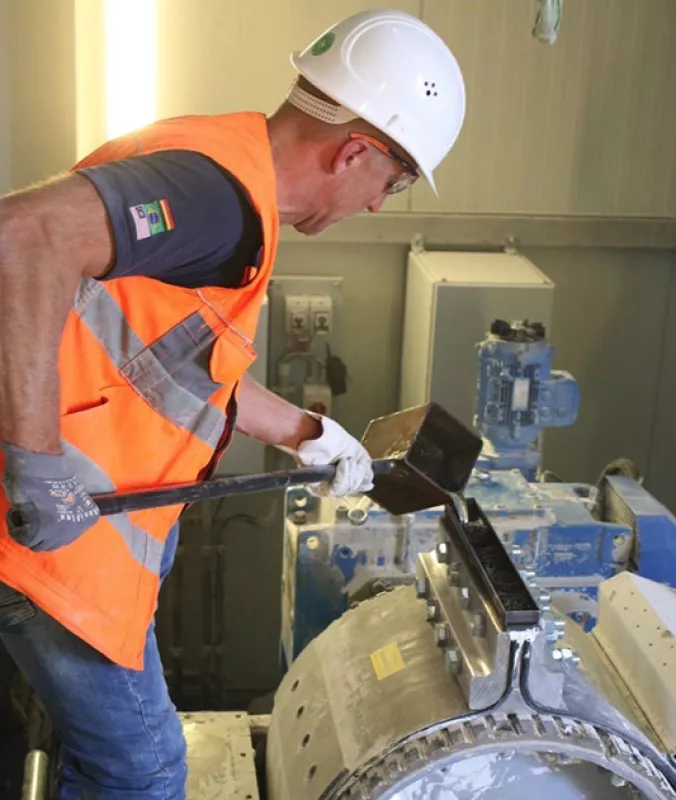“Right from the beginning, our three bucket elevators caused problems”, says Frank Baumann, plant manager at a medium-sized cement company based in Erwitte, North Rhine-Westphalia, near Soest, Germany. In 2014, the manufacturer also established a plant in Duisburg. “Here, we produce blast furnace cement, using a central chain bucket elevator as circulation bucket elevator for the vertical mill and two belt bucket elevators for the silo feeding,” describes Baumann.
The central chain bucket elevator on the vertical mill was unusually loud right from the beginning and there was also an immense chain vibration of more than 200 millimetres. Although the original supplier made several improvements, a high level of wear and tear was evident after only a short running time. “We had to service the systems more and more frequently”, says plant manager Baumann. Of course, this was expensive, on the one hand because of the downtimes, and on the other because of the spare parts.
Frequent Downtimes, high Costs
Due to the frequent downtimes on the vertical mill circulation bucket elevator, BEUMER Group was contacted in 2018. The system supplier not only supplies bucket elevators and modernises them if necessary, but also optimises existing systems of other suppliers.

“In cases like this, operators of cement plants are often faced with the question of whether a completely new plant or a possible conversion would be the more economical and targeted measure,” explains Marina Papenkort, Area Sales Manager in the Customer Support division at BEUMER Group. Because modernisation can be worthwhile: “With our customer support, we help our customers to fulfil future performance and technology requirements in a cost-efficient way in the context of modernisations and modifications”, says Papenkort.
“Typical challenges of our customers include performance improvements, adaptations to modified process parameters, new materials, optimisation of availability and extension of the maintenance cycles, designs easy to maintain as well as reduced noise levels”. In addition, all new developments with regard to Industry 4.0, such as belt monitoring or continuous temperature monitoring, are included in the modifications. BEUMER Group offers everything from one single source, from technical dimensioning to assembly on site. The advantage is to have only one contact and thus to benefit from reduced organisational and coordination expenses.
The profitability and especially the availability play a crucial role for customers, because modifications are often an interesting alternative to new constructions. In case of modernisation measures, as many components and structures as possible are kept in many cases also the steel structure. This alone reduces material costs by approximately 25 per cent compared to a new construction. In the case of this company, the bucket elevator head, the chimneys, the drive unit and the bucket elevator boot could be reused. “In addition, the assembly effort is lower, and so the downtime is usually much shorter,” explains Papenkort. This leads to a faster return on investment compared to a new construction.
Heavy Duty for coarse-grained Material
“We retrofitted the central chain bucket elevator to a high-capacity belt bucket elevator type HD (heavy duty),” reports Papenkort.
Belts with wire-free zones, and to which the buckets are fastened, are used for this type of bucket elevators just as with all BEUMER belt bucket elevators. In case of products from competitors, often the steel cords are cut through when mounting the buckets.
Thus the steel cords are no longer covered, which might result in moisture penetration and, as a consequence, lead to corrosion and damaged supporting cords. “That’s not the case with our systems. The tensile strength of the bucket elevator belt is completely kept,” explains Papenkort.
Another important factor is the belt clamping connection: The rubber of the steel cord ends is first removed on all BEUMER steel cord belts.
The technicians divide the ends into individual strands in the U-shaped part of the belt clamping connection, twist and cast it with white metal.
“Thus, the customer benefits from a huge time advantage,” says Papenkort. “After casting, the junction is completely cured after a very short time and the belt is ready for use”.



